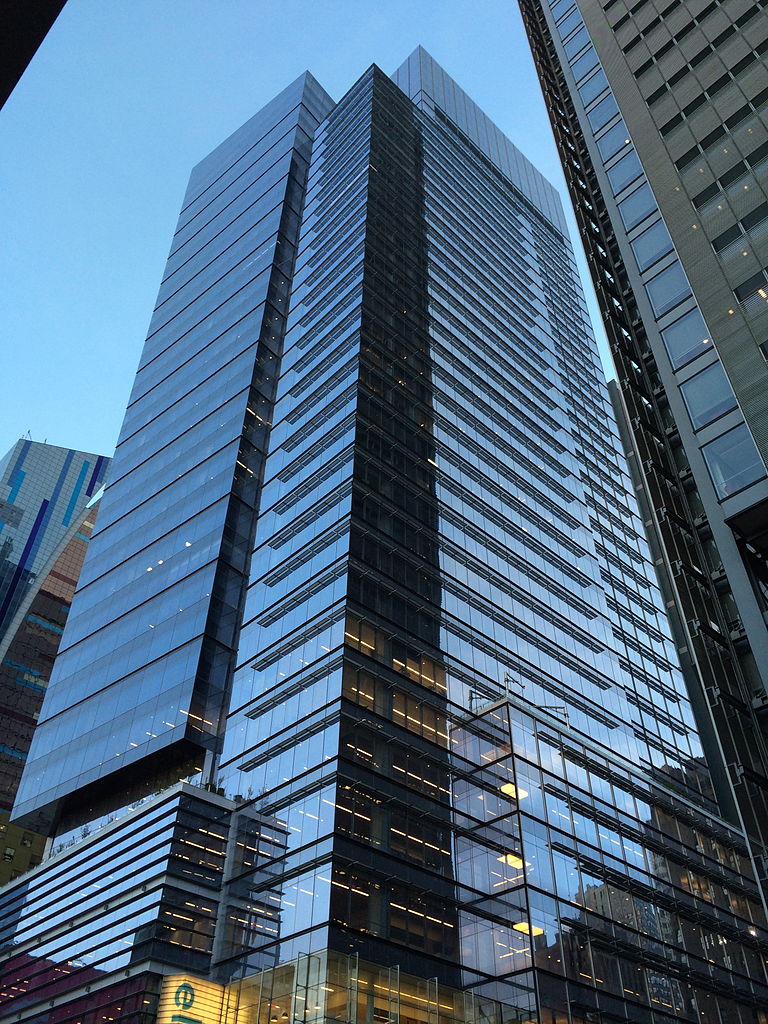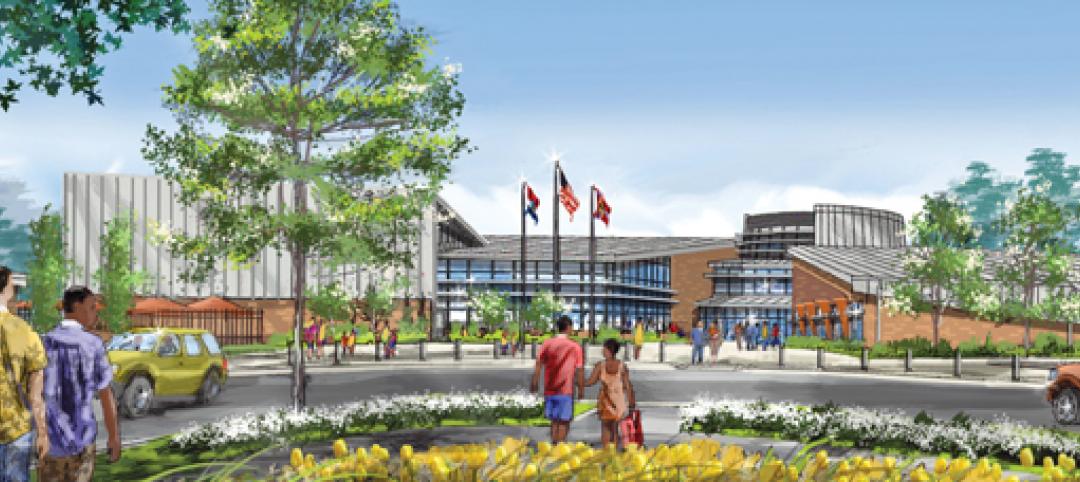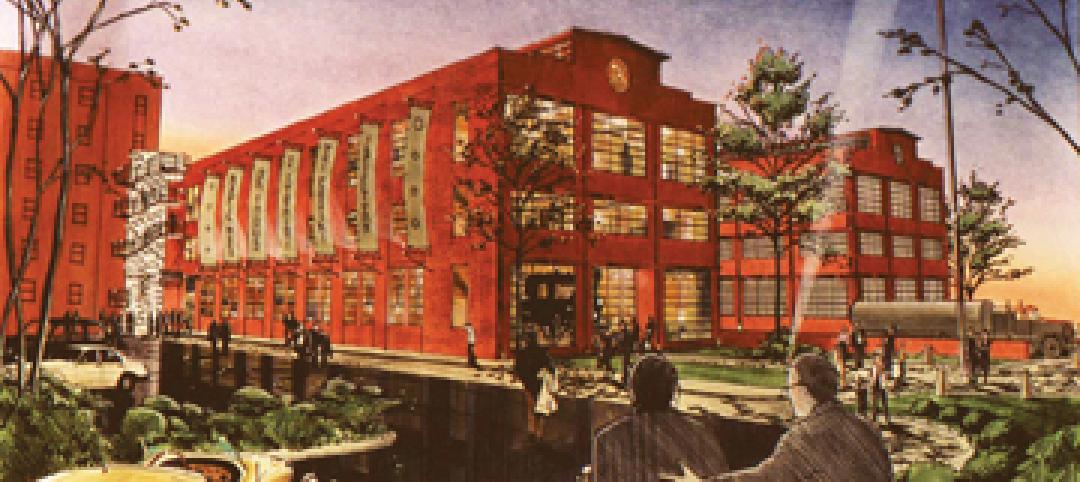When Plaza Construction first introduced the concept of "core first" in managing the construction of a major office building, the procedure of pouring concrete prior to erecting a steel frame had never been done in New York City. The precedent-setting development was utilized to build Eleven Times Square, a 40-story, 1.1 million-sf office building in New York City, resulting in a tremendous savings, completion a couple of months ahead of schedule and with no major accidents.
It was designed according to LEED Gold specifications, and its owner, SJP Properties, claims that it is one of the safest and most efficient buildings in the world. Needless to say, this method is now considered standard in the building industry, but Eleven Times Square was the first in this market.
The concrete-first method had long been used in other markets and throughout Europe, but there was strong resistance to it by New York’s laborers, mainly because of safety concerns. The developers were able to get the labor unions to buy into the technique through proving that a safe worksite will be maintained—and by all reports—Eleven Times Square changed a lot of minds.
Eleven Times Square’s architectural features include floor plates that expand as the building rises, as well as six tenant-exclusive terraces on the tower. Seven column-free corner offices are available on every tower floor, with panoramic views of the Hudson River, Times Square, and the Empire State Building. The base floors are 41,000 sf each.
How do you build a concrete core ahead of-and completely independent of-the structural steel frame? Why is it advantageous to do so? According to Richard Wood, President and CEO of Plaza Construction, “it’s done by erecting a self-climbing form-a gigantic mold, in effect-on top of footings, with reinforced steel placed inside it. Concrete is poured into the form, and when it’s dried, hydraulics lift the form up to a new point, and the process is repeated.”
“Within the concrete,” Wood explains, “flush to the face of the form, are flat plates of steel with sheer tabs welded onto them, from the trailing platform after the form climbs, and bolt-holes creating the attachment for the beams that will follow. The trailing platforms are part and parcel of the structure of the forming system. As the system is hydraulically lifted, the platforms go along with them so they’re constantly climbing the building.”
At Eleven Times Square, the foundation contractor, Urban Foundation/Engineering, got started on the concrete core before the foundation was completed and while the steel was still in fabrication. Also involved were Sorbara Concrete, Cives Steel and Cornell Erectors. During this process, the steel framing followed as soon as the bottom of the climbing forms cleared the embedding. This tightly organized system allowed completion of the core in the shortest possible time.
“This system is advantageous because these forming systems allow you to better control the quality of concrete and the schedule of the pours are not dependent on other work,” Wood explains. “This concrete core is in essence a building unto itself, a well-protected and secure core area that serves multiple purposes. It creates the lateral stability of the structure and a safe zone, after occupancy, and provides for safe egress.”
The core encloses all the building’s critical elements, including extra-wide stairways, elevators, utility risers, and the building’s command center. Mechanical, electrical, and telecommunications rooms for each floor are fully enclosed within the core walls, which results in greater security and reduced noise.
Eleven Times Square was particularly suited to the core-first option and SJP Properties chose this method based on the configuration of the core: a straight–up configuration that was especially receptive to the self-climbing, forming system. PERI, a manufacturer that has subsidiaries in more than 50 countries, provided the climbing forms.
“The forms were customized for specific projects,” Wood concludes. “The forming system is not just the form itself, but the platform that the trades work from, plus storage for materials that are introduced into the sheer wall as it climbs vertically. The system creates a self-contained secure area.”
The concrete core was made of locally sourced material, and most of the reinforcing steel was recycled-thus boosting the building’s LEED rating considerably.
According to SJP, the unions, site safety experts, and subcontractors worked together to develop a comprehensive safety plan. Egress was a major issue, which was addressed via a dedicated hoist for the core construction and a temporary stair hanging from the formwork, which accessed multiple levels at any given time, giving direct access to the permanent stairs-which were installed immediately to the underside of the form system at each jump. Plaza also employed two full-time safety managers to simultaneously monitor the core and steel construction, and implemented a safety reward program for the trades.
The result is a core-first system that allows for cost-savings, speed and safety because the concrete is erected in an encased cocoon.
Related Stories
| Jan 21, 2011
Upscale apartments offer residents a twist on modern history
The Goodwynn at Town: Brookhaven, a 433,300-sf residential and retail building in DeKalb County, Ga., combines a historic look with modern amenities. Atlanta-based project architect Niles Bolton Associates used contemporary materials in historic patterns and colors on the exterior, while concealing a six-level parking structure on the interior.
| Jan 21, 2011
Research center built for interdisciplinary cooperation
The Jan and Dan Duncan Neurological Research Institute at Texas Children’s Hospital, in Houston, the first basic research institute for childhood neurological diseases, is a 13-story twisting tower in the center of the hospital campus.
| Jan 21, 2011
Music festival’s new home showcases scenic setting
Epstein Joslin Architects, Cambridge, Mass., designed the Shalin Liu Performance Center in Rockport, Mass., to showcase the Rockport Chamber Music Festival, as well at the site’s ocean views.
| Jan 21, 2011
GSA Recognizes the Best in Public Architecture
The U.S. General Services Administration recognized the best in public architecture and civilian federal workplaces at the 2010 GSA Design Awards in Washington, D.C. This year's 11 award winners showcase the federal government's commitment to cutting-edge architectural design and its focus on sustainability.
| Jan 20, 2011
Houston Dynamo soccer team plans new venue
Construction is scheduled to begin this month on a new 22,000-seat Major League Soccer stadium for the Houston Dynamo. The $60 million project is expected to be ready for the 2012 MLS season.
| Jan 20, 2011
Worship center design offers warm and welcoming atmosphere
The Worship Place Studio of local firm Ziegler Cooper Architects designed a new 46,000-sf church complex for the Pare de Sufrir parish in Houston.
| Jan 20, 2011
Construction begins on second St. Louis community center
O’Fallon Park Recreation Complex in St. Louis, designed by local architecture/engineering firm KAI Design & Build, will feature an indoor aquatic park with interactive water play features, a lazy river, water slides, laps lanes, and an outdoor spray and multiuse pool.
| Jan 20, 2011
Community college to prepare next-gen Homeland Security personnel
The College of DuPage, Glen Ellyn, Ill., began work on the Homeland Security Education Center, which will prepare future emergency personnel to tackle terrorist attacks and disasters. The $25 million, 61,100-sf building’s centerpiece will be an immersive interior street lab for urban response simulations.
| Jan 19, 2011
Industrial history museum gets new home in steel plant
The National Museum of Industrial History recently renovated the exterior of a 1913 steel plant in Bethlehem, Pa., to house its new 40,000-sf exhibition space. The museum chose VOA Associates, which is headquartered in Chicago, to complete the design for the exhibit’s interior. The exhibit, which has views of five historic blast furnaces, will feature artifacts from the Smithsonian Institution to illustrate early industrial America.
| Jan 19, 2011
Baltimore mixed-use development combines working, living, and shopping
The Shoppes at McHenry Row, a $117 million mixed-use complex developed by 28 Walker Associates for downtown Baltimore, will include 65,000 sf of office space, 250 apartments, and two parking garages. The 48,000 sf of main street retail space currently is 65% occupied, with space for small shops and a restaurant remaining.

















